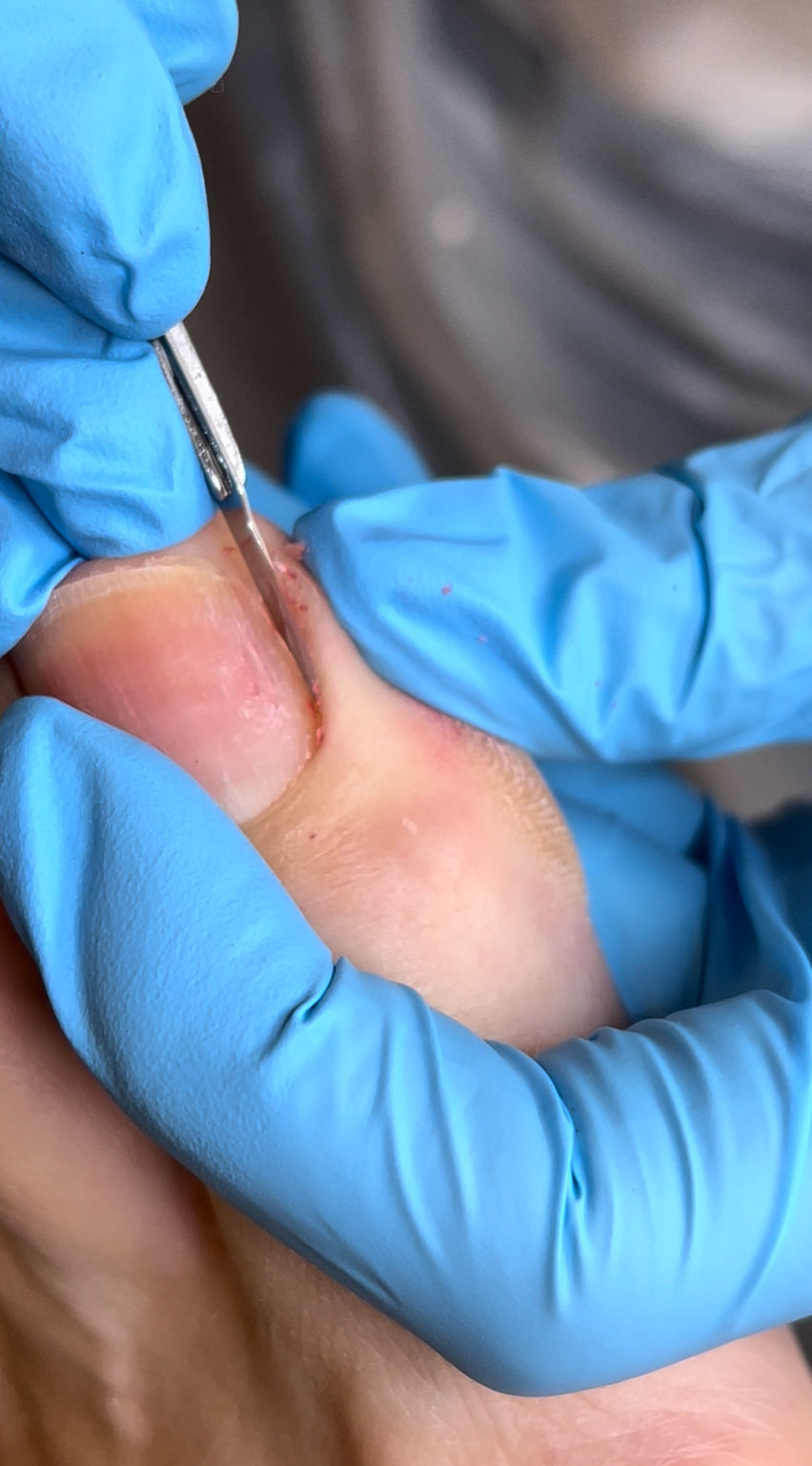
Ingrown toenails are one of the most common reasons people visit a podiatrist. They can be annoying at first, but often become painful enough to make walking, exercising or even wearing closed shoes uncomfortable. If you have noticed redness, swelling or sharp pain along the side of your toenail, you may be dealing with an ingrown toenail - and early treatment can make all the difference.
As podiatrists, we see ingrown toenails every day in our Balgowlah clinic, and the good news is they are very treatable.
What is an ingrown toenail?
An ingrown toenail happens when the corner or edge of the nail grows into the surrounding skin. It most commonly affects the big toe. At first, the area may feel a little tender, but as the nail pushes deeper into the skin, it can become quite painful. If left untreated, it may lead to infection or ongoing discomfort.
Antiseptic creams or antibiotics may help calm things down temporarily, but they don't fix the underlying issue-the nail pressing into the skin. Proper treatment focuses on relieving that pressure and correcting the nail's shape or growth.
Common signs and symptoms
You may have an ingrown toenail if you notice:
-
Pain or throbbing along one or both sides of the nail
-
Redness or swelling
-
The nail edge curving into the skin
-
Pus or discharge (in more advanced cases)
-
Bleeding around the nail
-
A soft, red 'extra' piece of tissue (hypergranulation)
-
Pain when wearing shoes or walking
Stages of ingrown toenails
Mild:
Slight redness, swelling and tenderness.
Moderate:
Increased pain, swelling, redness and often discharge or pus. The toe may feel warm.
Severe:
Chronic or persistent infection with significant tissue growth, known as hypergranulation tissue, around the nail.
What causes an ingrown toenail?
Ingrown toenails can develop for a range of reasons. The most common include:
-
Cutting nails too short or rounding the edges
-
Tearing or picking at nails
-
Repetitive trauma such as running or kicking sports
-
Dropping something heavy on the toe
-
Tight or narrow shoes
-
Natural nail shapes such as curved or involuted nails
-
Wide nail plates
-
Fungal nail infections
-
Toe deformities that affect nail growth
Understanding the cause helps determine the most effective treatment and how to prevent it from happening again.
How are ingrown toenails treated?
The best treatment depends on how severe the ingrown toenail is and whether it is recurring. At Sydney Podiatry Co, we offer several effective options, including:
Conservative care
Gentle trimming or reshaping of the nail edge to relieve pressure and allow the skin to settle.
Nail bracing
A small, painless brace is applied to help reduce the nail�s curvature over time.
Partial Nail Avulsion (PNA)
A simple, in-clinic procedure performed under local anaesthetic. The ingrown section of the nail is removed and a solution is applied to prevent it from growing back. This offers a long-term solution with minimal downtime.
Managing infection
If the area is infected, antibiotics may be required to calm the surrounding tissue while the primary cause is treated.
When should I see a podiatrist?
You should book an appointment with a podiatrist if:
-
Your toe is painful or keeps flaring up
-
You can see redness, swelling, warmth or discharge
-
You have tried home remedies, and nothing is improving
-
You have had repeated ingrown toenails
-
You have diabetes or circulation issues and notice any nail changes
Early treatment prevents complications, supports faster healing and reduces the chance of the ingrown toenail returning.
